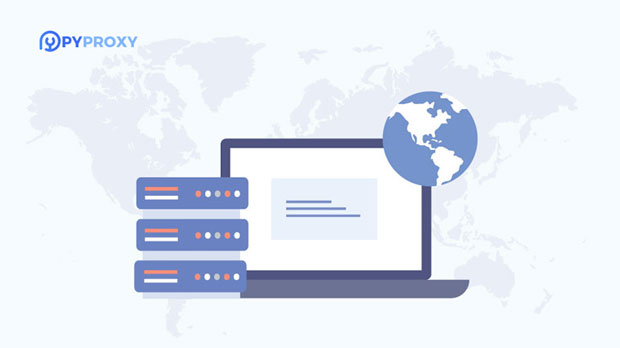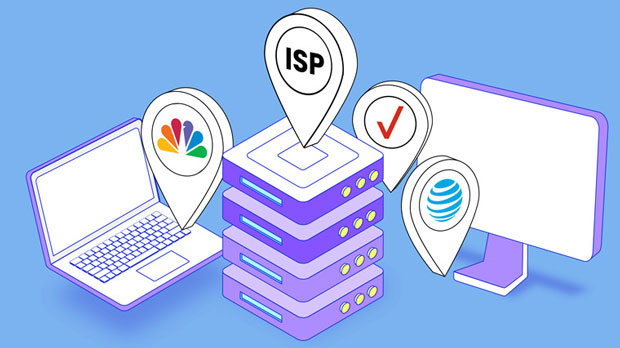In today's digital age, accessing content that is geographically restricted has become a common challenge for internet users. From streaming platforms and social media to specific websites, geo-blocking prevents users from accessing certain content based on their location. A powerful tool for bypassing these restrictions is the use of a high-speed socks5 proxy. Unlike traditional VPNs, socks5 proxies provide users with more flexibility and speed, which is essential for activities such as streaming, online gaming, and accessing region-locked websites. In this article, we will discuss how SOCKS5 proxies work, why they are effective in bypassing geo-restrictions, and the steps to set up and use them efficiently. Understanding SOCKS5 Proxy TechnologyBefore delving into how to use SOCKS5 proxies to bypass geo-restrictions, it’s important to understand what a SOCKS5 proxy is and how it functions. SOCKS stands for "Socket Secure," and version 5 is the most recent protocol in this series. A SOCKS5 proxy acts as an intermediary server that routes your internet traffic through a remote server, masking your real IP address. This allows you to appear as though you are browsing from a different location, effectively bypassing regional content restrictions.Unlike HTTP or HTTPS proxies, which work only with specific types of internet traffic, SOCKS5 proxies can handle any type of internet traffic, including HTTP, FTP, SMTP, and more. This flexibility makes them particularly valuable for users looking to bypass geo-restrictions on a wide variety of services. Additionally, SOCKS5 proxies offer improved speed and reliability compared to other types of proxies, making them an excellent choice for activities that demand high performance, such as streaming or gaming.Why SOCKS5 Proxies Are Ideal for Bypassing Geo-RestrictionsSeveral factors make SOCKS5 proxies particularly effective in bypassing geo-restrictions:1. Anonymity and Privacy: SOCKS5 proxies help mask your real IP address, making it appear as though you are accessing the internet from a different geographical location. This feature is essential for bypassing geo-restricted content, such as video streaming platforms or region-locked websites, that enforce access based on your IP address.2. High Speed: Unlike traditional VPNs, SOCKS5 proxies generally offer faster speeds due to their lightweight nature. They don’t encrypt your data the same way VPNs do, which reduces the overhead and results in faster browsing, streaming, and downloading speeds. This speed advantage makes SOCKS5 proxies especially useful for streaming HD videos, gaming, and other data-heavy activities.3. Compatibility: SOCKS5 proxies are highly compatible with various protocols and applications. Whether you are accessing web browsers, torrenting applications, or even online gaming platforms, SOCKS5 proxies can route your traffic seamlessly across different types of services, bypassing geo-restrictions with ease.4. No Data Encryption: While the lack of encryption may seem like a disadvantage in terms of privacy, it can be an advantage when speed is a priority. Since there is no encryption overhead, SOCKS5 proxies offer low latency and faster performance, which is crucial for tasks that require high-speed connections, such as watching geo-restricted content or playing region-locked online games.Steps to Set Up and Use a SOCKS5 Proxy to Bypass Geo-RestrictionsNow that we understand the advantages of SOCKS5 proxies, let’s look at how to set one up and use it effectively to bypass geo-restrictions. The following steps outline the general process:1. Choose a SOCKS5 Proxy Service To use a SOCKS5 proxy, you first need to subscribe to a SOCKS5 proxy service. Once subscribed, you will receive the necessary credentials (IP address, port number, and login information). While there are many proxy services available, make sure to choose one that offers high-speed servers, stable connections, and sufficient coverage of regions where you need access.2. Configure the SOCKS5 Proxy in Your Device’s Settings After obtaining the necessary credentials, the next step is to configure the SOCKS5 proxy in the device or application that you plan to use for accessing geo-restricted content. The process will vary depending on the operating system or software, but most modern browsers and applications (such as Chrome, Firefox, or torrent clients) offer built-in support for SOCKS5 proxies. - For Browsers: In your browser settings, navigate to the proxy settings section. Choose the SOCKS5 protocol and input the IP address and port number of the socks5 proxy server you received. Some browsers, like Chrome and Firefox, also allow you to specify whether you want to use the proxy for all traffic or just for specific activities. - For Torrent Clients: Popular torrent clients, such as BitTorrent or qBittorrent, also support SOCKS5 proxies. Simply enter your proxy server details into the network settings of the client. You may also want to enable a “force proxy” option to ensure that all your torrenting traffic is routed through the proxy server.3. Test Your Connection Once your SOCKS5 proxy is configured, it’s essential to test your connection to ensure that it is working correctly. You can use online IP lookup tools to check if your real IP address has been masked and whether your internet traffic is being routed through the proxy server in the desired location. Additionally, if you're using the SOCKS5 proxy to access specific geo-restricted content (e.g., streaming services), test the service to verify that you can access the content without any issues.4. Monitor and Adjust Settings If you experience any slowdowns or connection issues, consider switching to a different SOCKS5 server or adjusting the configuration settings. Some proxy services offer multiple servers in different locations, so switching servers can often resolve performance issues.Common Use Cases for Using SOCKS5 Proxies to Bypass Geo-RestrictionsSOCKS5 proxies are highly versatile and can be used for a variety of purposes to bypass geo-restrictions. Here are some common use cases:1. Streaming Services: Many popular streaming platforms (such as video-on-demand services) restrict access to certain content based on your geographic location. Using a SOCKS5 proxy allows you to appear as though you are in a different country, enabling you to access content that is otherwise unavailable in your region.2. Online Gaming: Some online games have region-locking mechanisms that prevent players from certain countries from accessing specific servers or game features. A SOCKS5 proxy can help you connect to a game server in another region, giving you access to exclusive content or lower latency.3. Accessing Region-Locked Websites: Many websites, including e-commerce platforms and news websites, restrict access based on your IP address. SOCKS5 proxies allow you to bypass these blocks and access websites as if you were located in a different country.Final ThoughtsUsing a high-speed SOCKS5 proxy is one of the most effective methods for bypassing geo-restrictions on the internet. With its flexibility, speed, and ability to route all types of internet traffic, SOCKS5 is a powerful tool for accessing content that may otherwise be unavailable in your region. Whether you're streaming video, gaming, or simply browsing, a SOCKS5 proxy can provide you with the freedom to explore the internet without geographic limitations. However, always ensure that you are using secure and reputable proxy services to maintain your privacy and security online.
Jan 10, 2025
![arrow]()



















































